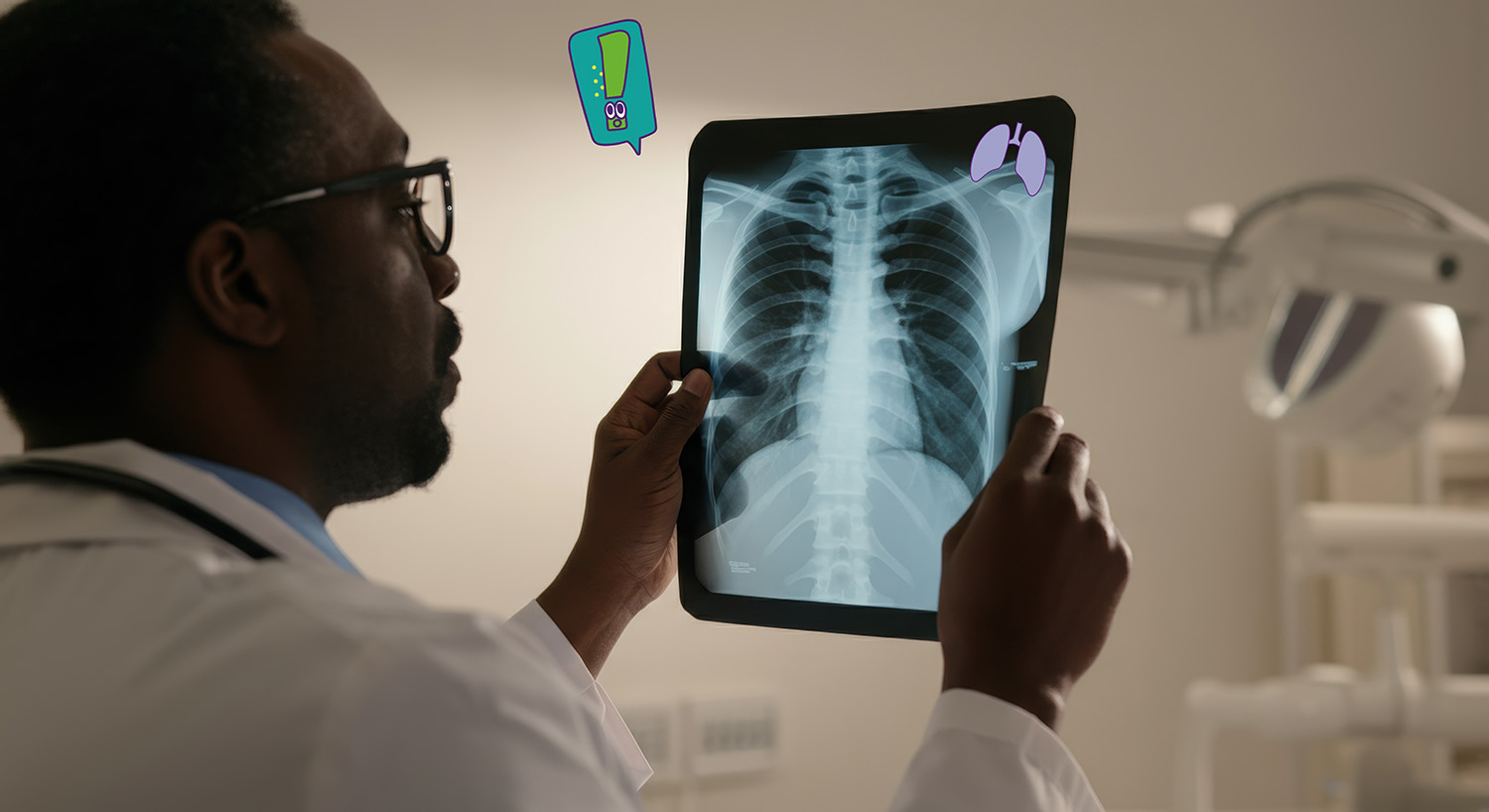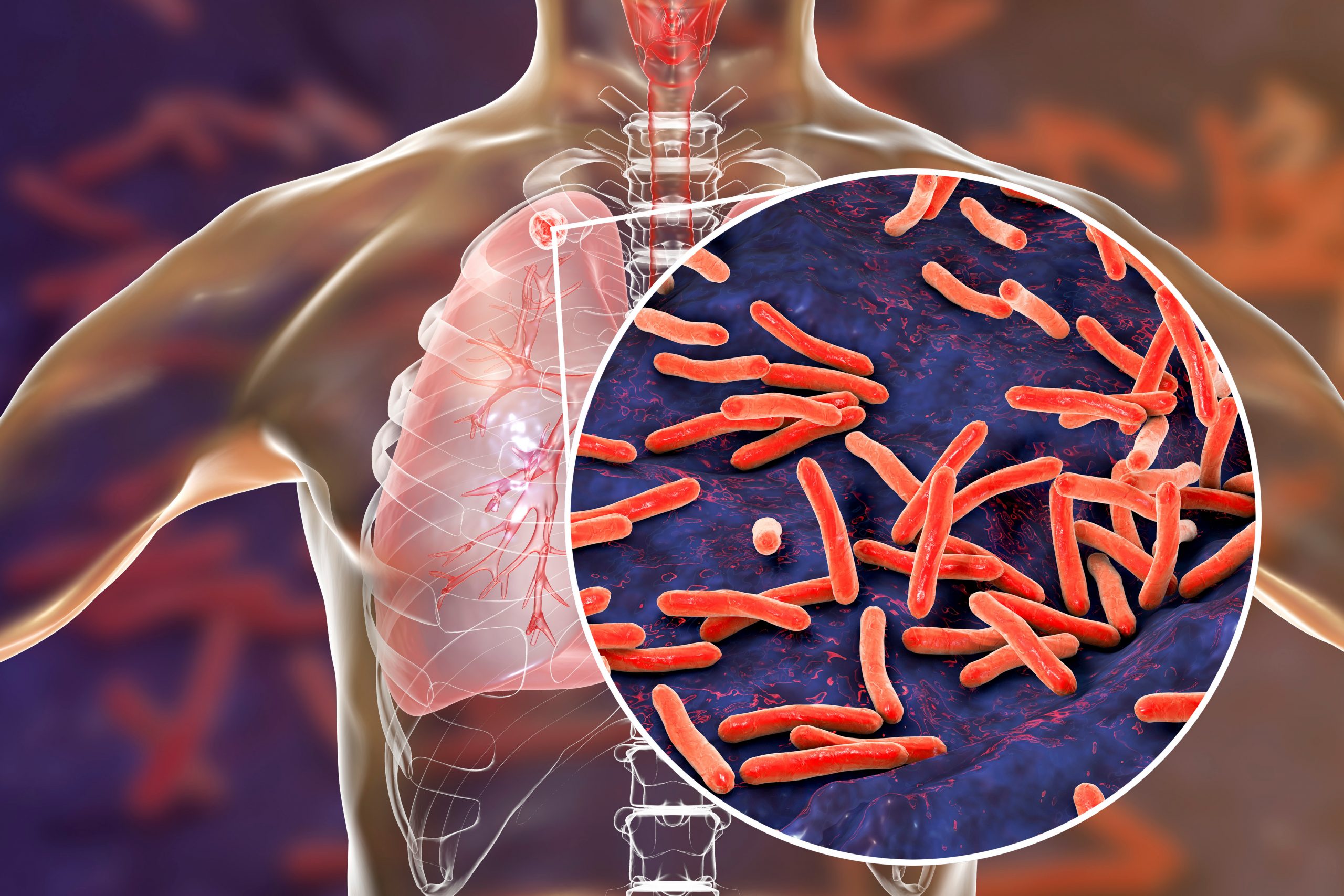Understanding Tuberculosis
Explore this health file to better understand tuberculosis: its causes, its symptoms
but also the means of prevention and treatment.

Posted on
I. Tuberculosis: definition and key figures
Definition:
Tuberculosis (TB) is an infectious disease caused by a mycobacterium called Mycobacterium tuberculosis or Koch’s bacillus [1,2]. It is transmitted through the air by the projection of tubercle bacillus in the air following sneezing, coughing, or spitting [1].
The disease usually affects the lungs but can also affect other organs [2]. It is responsible for significant morbidity and can lead to death if left untreated [2].
Today, it is possible to prevent tuberculosis but also to cure it thanks to very effective treatments when rigorously followed.
Key figures:
- According to WHO, 9.9 million people developed TB worldwide in 2020, including 5.5 million men, 3.3 million women and 1.1 million children [1]
- WHO estimates that 66 million lives were saved between 2000 and 2020 through the diagnosis and treatment of TB [1]
- WHO estimates that nearly one-third of the world’s population is infected with the tubercle bacillus [3]
- In 2016, 2.5 million people developed TB in Africa, accounting for a quarter of new TB cases globally.[4]
II. Causes
Human tuberculosis is primarily caused by the bacterium Mycobacterium tuberculosis, also known as Koch’s bacillus or BK.
It is transmitted through the air: when a person coughs, sneezes, or spits, he releases the bacteria into the air. If a person inhales the bacteria, he becomes infected.
The difference between latent and active TB infection:
When a person is infected with the bacteria, he does not necessarily develop TB disease. In fact, in 90% of cases, the bacteria remain dormant in the body and do not cause disease. In short, the bacteria are in the body but the immune system fights them and prevents them from multiplying. In this case, the infected person is not sick, has no symptoms and is not contagious, a condition known as latent tuberculosis infection (LTI) [2,5]. This condition can last for years and even decades.
In 10% of infected people, the bacteria will not be sufficiently controlled by the immune system. In this case, they will develop active tuberculosis: the person will be sick, contagious and will develop symptoms, most often in the lungs (75% of infected people have a form called pulmonary tuberculosis that affects the lungs).
Active tuberculosis can also appear years after inhaling the bacteria, due to a weakening of the body and the immune system, which can be caused by age, malnutrition, diabetes, smoking, HIV or certain drugs [2,5].
Risk factors for tuberculosis
As mentioned above, 90% of people infected with the bacterium will not develop an active form of TB disease. However, there are risk factors that encourage the development of the active form of the disease such as: [7]
- Immunosuppression
- Diabetes (2 to 4 times higher risk)
- Malnutrition and weight loss (BMI below 18.5, risk multiplied by 2 to 3)
- Tobacco use (risk multiplied by 2 to 4 for an average consumption of 20 cigarettes per day)
- Drugs and alcohol addiction.
- Kidney failure (risk multiplied by 10 to 26)
- Exposure to an atmosphere with a very high dust load (30-fold risk)

III. The symptoms
In pulmonary tuberculosis, the main signs that appear are: [8,9]
- A permanent cough sometimes accompanied by blood-tinged sputum
- Night sweats
- Persistent fever
- Weight loss
- Weakness
- Chest pain
In the case of extra-pulmonary tuberculosis, the symptoms change depending on the location of the disease and the organs affected. Thus, one may have: [9]
- Pain in the abdomen
- Headache
- Loss of appetite
- Fatigue
- Persistent fever
- Large lymph nodes, often in the neck.
- Pain in the joints and in the back
IV. Prevention
To prevent tuberculosis, it is necessary to evolve in a healthy environment that does not encourage contagion and contamination:
- Fighting poverty
- Healthy housing
- Fight against overcrowding
- Fight against malnutrition
For people who are particularly exposed to TB patients, prevention relies on simple daily practices such as hand washing and regular screening for the disease. [7]
Tuberculosis can also be prevented, especially in children. There is an anti-tuberculosis vaccine called BCG that is particularly effective in preventing tuberculosis in children. However, its effectiveness in adults is variable [5].
V. Treatment and diagnosis
Thanks to the evolution of medicine, it is now possible to cure tuberculosis. According to the WHO, it is estimated that the diagnosis and treatment of tuberculosis have saved 66 million lives since 2000.
For people with symptoms and signs of TB, the WHO recommends the use of rapid molecular tests. These tests are very reliable and allow for early detection of TB. It should be noted, however, that the diagnosis of tuberculosis is particularly complicated in children [1].
If a person has developed an active form of tuberculosis, there are now treatments available to treat and cure it. Treatment for TB consists of a combination of several anti-TB antibiotics (usually 4) that must be taken for 6 months. It is sometimes necessary to isolate the patient at the beginning of the treatment to reduce the risk of contagion.
Note: it is essential to take the treatment accurately and without omission for the duration of the prescription. Otherwise, relapses may occur, and the patient may develop drug resistance. [1,2]
POI 0798-02/23
Sources :
[2] https://sante.gouv.fr/soins-et-maladies/maladies/maladies-infectieuses/article/la-tuberculose
[3] https://www.who.int/fr/news-room/facts-in-pictures/detail/tuberculosis
[4] https://www.afro.who.int/fr/health-topics/tuberculose-tb
[5] https://www.vidal.fr/maladies/voies-respiratoires/tuberculose.html
[7] https://www.vidal.fr/maladies/voies-respiratoires/tuberculose/causes.html
[9] https://www.ameli.fr/assure/sante/themes/tuberculose/symptomes-diagnostic-evolution
